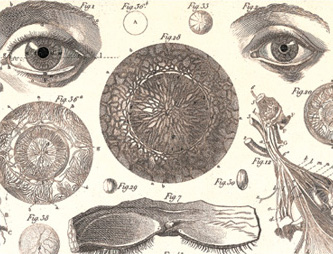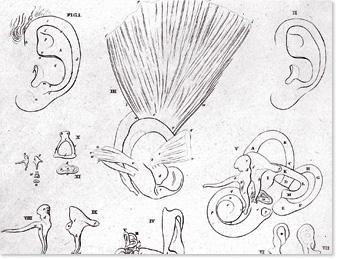Creative expression is the process of conveying meaning from one person to another, and metafora holds the stuff of creativity. In the digital medium, there is no physical substrate, so we must focus on the basic components of communication: gesture, sound, object, image, and word. The word "metaphor" refers primarily to a figure of speech in which one idea or representation of an object is used to describe something else. Its root in Greek is the word "metafora" that we use to represent: (1) the basic element of creative formulation; (2) the new expressive possibilities that can be generated with the aid of the computer.
- Leo Tolstoy (Russian writer, 1828-1910), What is Art?
Traditional creative forms are determined by their physical characteristics. Photography can be described in terms of how the camera and lens focus light onto film, or the ways photographic paper can be used to print an image. But the computer presents the user with a dazzling array of tools, and tools that seemingly change day to day. There is no physical substrate to describe. We have chosen to discuss the creative potential of the computer in terms of the most basic level of communication: gesture, sound, object, image, and word. All of these forms have existed before and are given new meaning in the computer. Gesture is primary to the formation of metafora. Sound requires motion, but not necessarily a physical object, to form expression. Objects hold our ideas in physical form. Image is the graphic representation of idea, and words help us to communicate and to think. These elements have always interacted with one another in the formation of imaginative human endeavor, and all creative acts use one or more of these elements. Dance combines gesture with sound and often includes objects in the form of props. Painting uses movement to create image and objects, and music combines movement, sound, and words. All of these share the fact that they are a means of transferring creative intent from the creator to the audience.


Anatomy Diagrams
In the computer, the container for creativity is always shifting. The computer mimics existing forms (photography, for instance) and enables us to create meaning in forms we might never have imagined, such as hip-hop music or architectural structures such as Frank Gehry's (Canadian-American architect, born 1929) museum in Bilbao. Furthermore, it is the very fluidity of digital media and tools that has allowed continuous innovation, as in hip-hop, whereby each new rapper creates a "fresh new style." There is no canon of hip-hop, nor for that matter of digital media. The computer allows us a new hub for the combination of these multimedia forms, whereby activities are no longer contained in discrete media. The realm of the circuit has made it possible to mix and transform a creative message into many permutations, because the creator is no longer limited by the physical forms of metafora.
In addition, the very speed of the computer—both in how it helps us formulate ideas and how we can deliver them—changes the creative act. On the most basic level, think of how email has changed the nature of writing, and how the ease of sending a photograph with that message is further changing the illumination of even the most banal events in our lives.
It is hard to think of any form of creative expression that has not been affected by the computer, whether in opposition to it (as painting was changed by photography) or formed within it (as photography has morphed into digital imaging). The future holds the potential for forms of expression we have yet to imagine.
